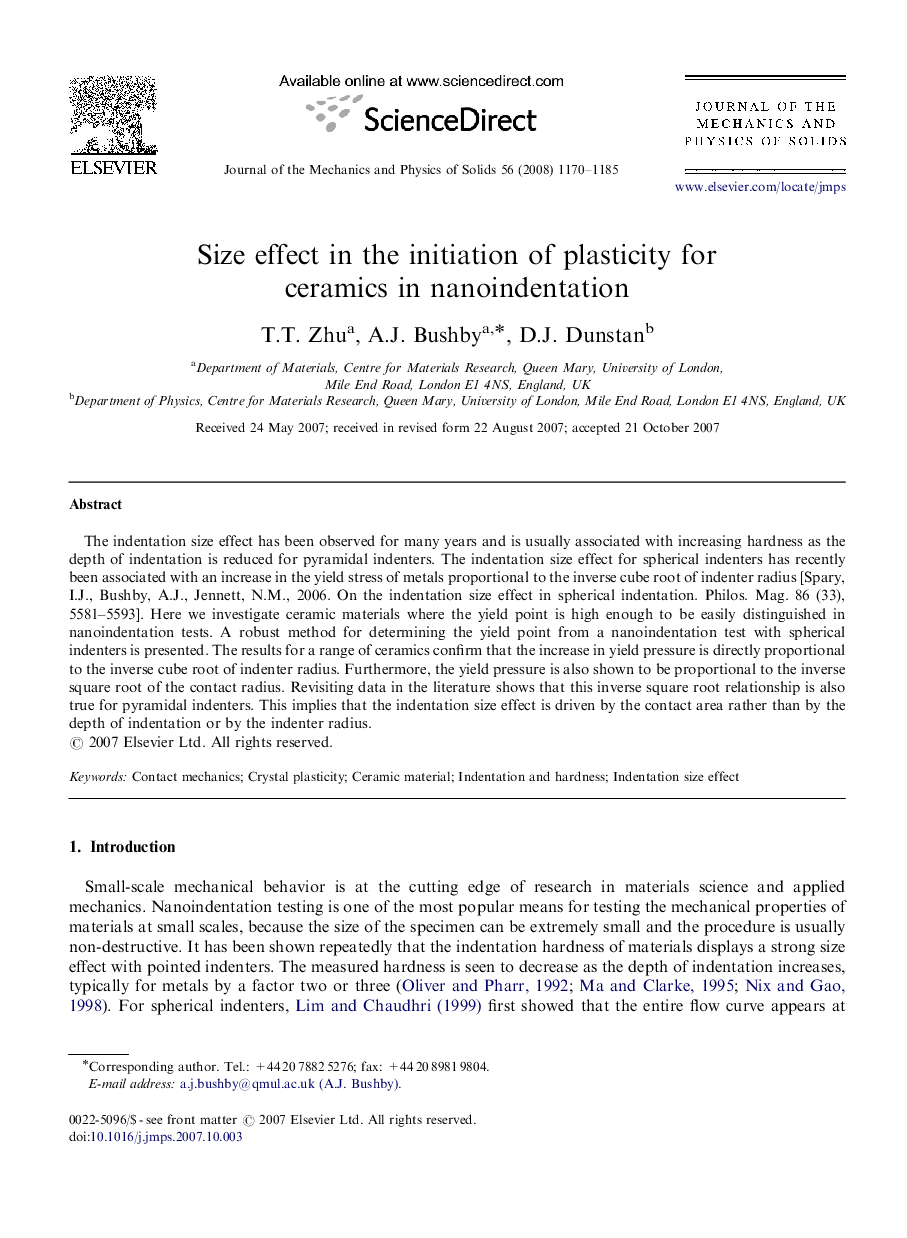| Article ID | Journal | Published Year | Pages | File Type |
|---|---|---|---|---|
| 800047 | Journal of the Mechanics and Physics of Solids | 2008 | 16 Pages |
The indentation size effect has been observed for many years and is usually associated with increasing hardness as the depth of indentation is reduced for pyramidal indenters. The indentation size effect for spherical indenters has recently been associated with an increase in the yield stress of metals proportional to the inverse cube root of indenter radius [Spary, I.J., Bushby, A.J., Jennett, N.M., 2006. On the indentation size effect in spherical indentation. Philos. Mag. 86 (33), 5581–5593]. Here we investigate ceramic materials where the yield point is high enough to be easily distinguished in nanoindentation tests. A robust method for determining the yield point from a nanoindentation test with spherical indenters is presented. The results for a range of ceramics confirm that the increase in yield pressure is directly proportional to the inverse cube root of indenter radius. Furthermore, the yield pressure is also shown to be proportional to the inverse square root of the contact radius. Revisiting data in the literature shows that this inverse square root relationship is also true for pyramidal indenters. This implies that the indentation size effect is driven by the contact area rather than by the depth of indentation or by the indenter radius.
